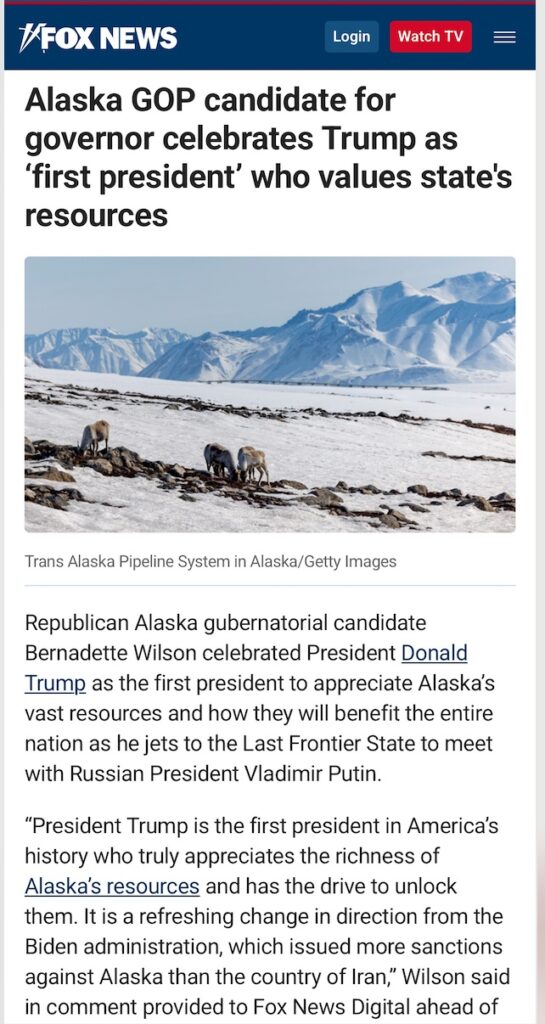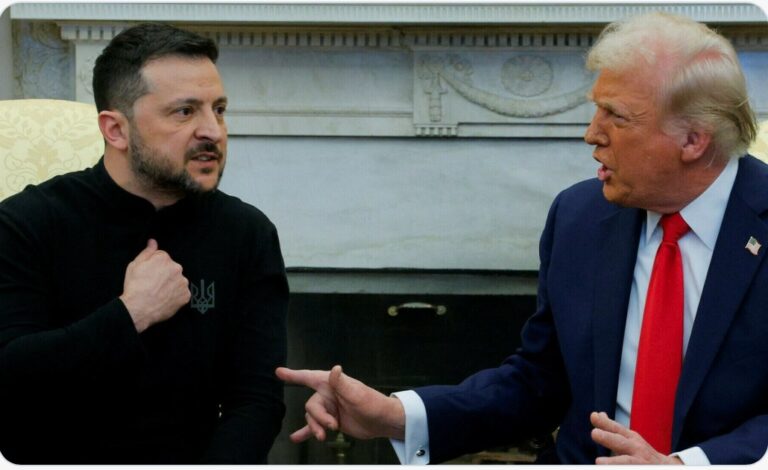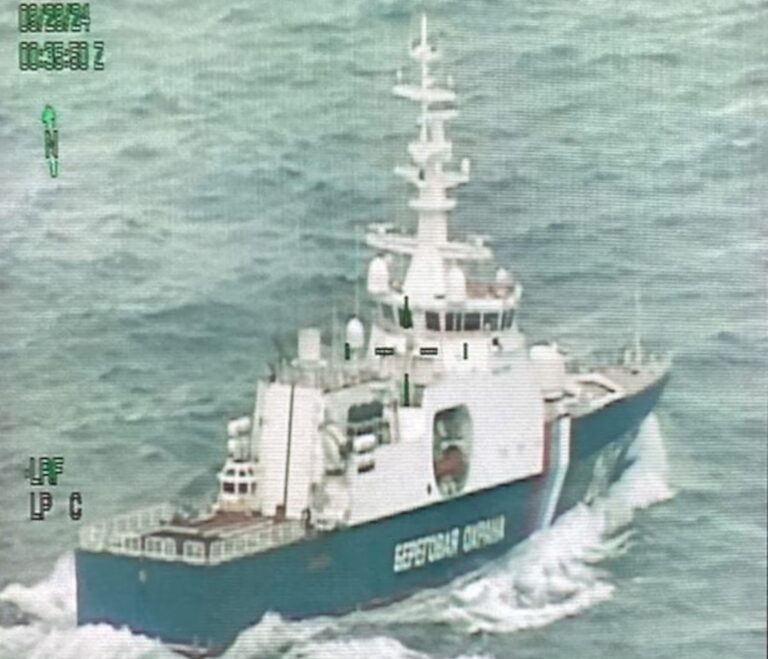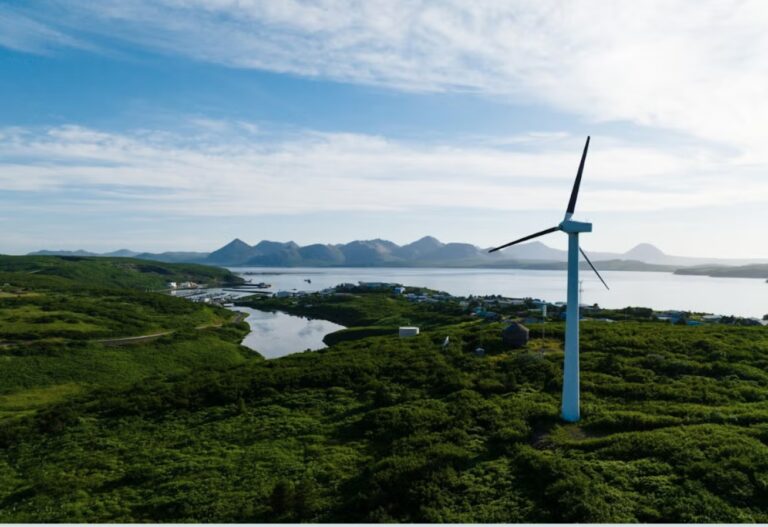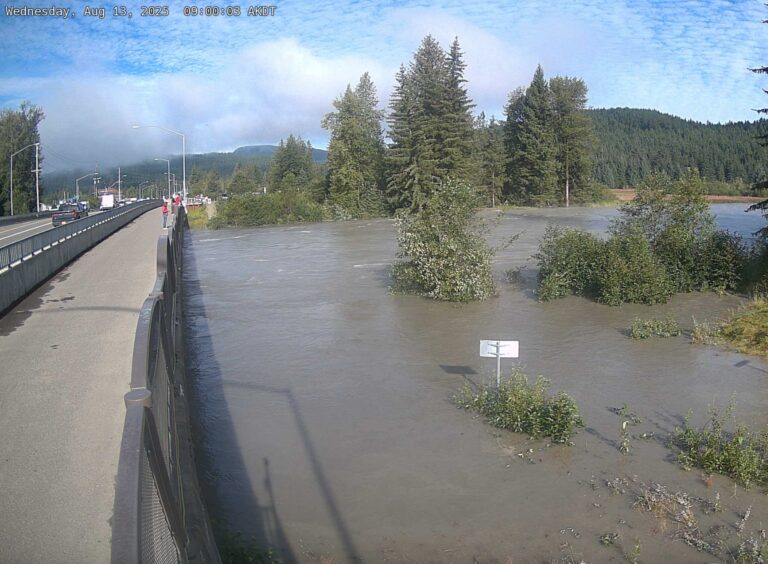By DAVID IGNELL
Yesterday’s historic summit meeting at Joint Base Elmendorf Richardson between President Donald Trump and Russia’s president Vladimir Putin had much of the world watching our state.
In a Bloomberg podcast before the event, Gov. Mike Dunleavy said there “are going to be a lot of reporters here, a lot of others with their eyes on this great state, a huge deal for Alaska.”
Hopefully some of those eyes belong to FBI Director Kash Patel and US Attorney Pam Bondi. A source recently informed me of talk on social media that FBI agents are looking for rental housing in Anchorage.
While at JBER to cover the historic summit, Fox News anchor Sean Hannity did a video interview with Patel. Early on, Patel said he was “blown away” when “corrupt bureaucrats weaponize and destroy law enforcement like predecessors of mine did with the FBI. Trump is for transparency and accountability.”
Last weekend in Washington DC, one of Bondi’s DOJ employees shouted obscenities in the face of a law enforcement officer and then threw a Subway sandwich at his chest. The DOJ employee was promptly fired and charged with felony assault.
On Thursday, Bondi posted on X, “If you touch any law enforcement officer, we will come after you. This is an example of the Deep State we have been up against for seven months as we work to refocus DOJ.”
These statements by Bondi and Patel in the past couple of days bring to mind the very troubling case brought by Alaska Attorney General Treg Taylor against former Ketchikan Police Chief Jeff Walls. Walls’ decorated law enforcement career was destroyed by Taylor shortly after Ketchikan increased their fentanyl seizures by over 500% in the first year of Walls’ leadership.
As readers may recall from my first article about Walls, in November of 2022 the Special Agent in Charge of the Anchorage FBI recognized the Ketchikan Police Department for having the most drug seizures of any department in Alaska. However, the next month one of Taylor’s special prosecutors misled a Ketchikan grand jury into indicting Walls for felony assault.
While off-duty eating dinner with his wife Sharon at a local restaurant outside of city limits, Walls was assaulted twice by a large, drunk aggressive man who used his full body weight to slam up against Walls from behind. The second assault injured Sharon seated next to him.
After recovering from the second blow, Walls subdued the assailant. Yet instead of charging the assailant with a felony, Taylor dropped the misdemeanor charges against him and instead went after Walls. Not just once but three times. Each of those three times Taylor’s prosecutors misled different grand juries in Ketchikan and Juneau on facts and law.
The judge finally dismissed the indictment with prejudice, writing she had no confidence the State would get it right a fourth time. These were unusually strong, nearly unprecedented words, coming from the pen of an Alaskan judge.
As my second article last month on the Walls case stated, Taylor withheld from the 2nd and 3rd grand juries the report of Lieutenant Jeff Hall, a retired State Trooper who was previously the major crimes investigator for “A” Detachment in Ketchikan. Hall’s report concluded, “this case never should have been brought forward”, “the chief showed great restraint”, and “[the chief] was ill-served by the trooper and the prosecutor”
Not mentioned in my previous articles was the report of a current law enforcement officer who like Hall, was also highly critical of the State Troopers’ investigation of Walls’ case. Among other things, the officer stated that the actions of one of the Troopers constituted Tampering with a Witness in the 1st Degree, a class C felony. The officer also reported that one of the Troopers altered the statement of a witness in his report. The officer concluded that the Troopers’ investigation was both illegal and unethical.
Taylor not only dropped charges against Walls assailant, but he didn’t pursue felony charges against an Alaska State Trooper in the process of concocting charges against Walls.
Shouldn’t that make Taylor susceptible to at least a federal investigation, and possibly charges?
Facts in the Walls’ case even suggest the attack on him and his wife may have been intentional, designed to provoke a hostile reaction from the chief for the purpose of getting him out of Ketchikan. Evidence connects a State Trooper making over $200,000 a year to this objective. Obviously, this aspect of the Troopers’ “illegal and unethical” investigation was never explored.
The bottom line is this: the conduct of Taylor, his special prosecutors and State Troopers in the Walls case is far more egregious and a risk to national security than the actions of the DOJ employee in DC assaulting an officer with a Subway sandwich.
The only recourse for the assault against Walls and his wife is for Bondi to prosecute.
Ms. Bondi and Mr. Patel, welcome to the Deep State in Alaska. Our judiciary and criminal justice system have been off the rails for a long, long time. Prosecutors and judges routinely mock basic ethical standards. State Troopers change words and statements to make probable cause statements fit criminal charges.
High-ranking Alaska officials doing this to a decorated police chief, proven to have made a serious dent in the infestation of deadly fentanyl on Ketchikan streets, should make this a high priority concern to you.
Furthermore, certain evidence points to Ketchikan being a relatively low risk and efficient US entry point for fentanyl coming from China on its way south into the continental United States. Is that why Chief Walls and his effective initiatives to seize fentanyl were such a threat? Did they threaten not only the supply of an Alaskan region but a major pipeline into the rest of the United States?
When it comes to questionable conduct by State of Alaska officials, the Walls’ case is certainly no outlier. Patel’s team won’t have to dig far into our own Deep State to find an alarming pattern of constitutional rights being denied to Alaskan citizens going back decades. Much of the work has already been done.
In the Thomas Jack Jr., case they’ll find an Alaska Native man incarcerated for 15 years after another shoddy investigation by State Troopers directed by prosecutors, important exculpatory evidence withheld from the grand jury, and twice being denied a jury of his peers.
They’ll find the State forced a second trial despite knowing Jack did not have competent counsel. They’ll find for the last 10 years the State’s Office of Public Advocacy has provided Jack with attorneys unwilling to prosecute what should be a “slam dunk” post-conviction relief motion on the incompetency issue, and another attorney with a serious conflict of interest.
In the Tommy Hull case, they’ll find a construction worker who was incarcerated for over six years without his case being brought to trial. They’ll find Hull’s assets were frozen through a related divorce proceeding that prevented him from making bail. They’ll find that Hull was repeatedly denied his choice of counsel. They’ll find Hull’s petitions to dismiss the charges based on the lack of a speedy trial were not only denied by state and federal judges in Alaska, but they were even opposed by the attorneys the judge tried to force on him. They’ll find that last week Hull was under duress and pressured by the State to take a plea deal that gave him immediate freedom in exchange for a guilty plea. There’s likely more, but I just found out about Hull’s case two weeks ago.
In the case of AK Mom, they’ll find a registered nurse who the State retaliated against by using false allegations of medical abuse to take away her five children. Over the next three years the State subjected this family to a horrible nightmare, splitting the children up, taking them out of their schools and away from their friends, taking them off prescribed medications, and moving them around the state while ignoring provisions of the Indian Child Welfare Act. Towards the end of the children’s captivity, Taylor’s attorneys fought to keep one of the youngest children in a homeless shelter known to be targeted by traffickers.
These cases just scrape the surface of the abuse and denial of due process that American citizens and families have experienced at the hands of State of Alaska officials.
Cases like Mary Fulp’s must also be investigated. Fulp, an educator who in 2022 was Alaska’s Principal of the Year was taken into custody by Troopers, stripped of her personal belongings, forcibly restrained, and administered medications against her will, simply for posting a Facebook video where she said Jesus is King and that she stood with the Martin Luther King civil rights movement. Constitutionally protected speech in Alaska is in jeopardy.
Public testimony by former State Lieutenant Governor Loren Lehman has detailed how a Democrat legislator once bragged to him that the Alaska judiciary will always be controlled by Democrats. Perhaps the Democrat’s control of our judiciary is why constitutional rights don’t matter in these cases and why our judges act more like politicians.
Local judicial activism to force substandard education on our children, break up families, deny due process rights, weaponize false sexual assault and domestic violence allegations, subvert grand jury rights, overlook essential ethical principles, and to allow legislators to rob our Permanent Fund distributions, all serve to make Alaska weak instead of strong.
In 2022 when we had a chance to change the judicial system by voting “yes” for a constitutional convention, big money came in from Washington DC groups like the National Education Association and the Sixteen Thirty Fund to support the “no” vote.
American citizens in Alaska need President Trump’s help to escape the State’s tyranny. Alaska is essentially a banana republic for the Deep State.
The State’s objectives and historical pattern of denying constitutional rights, breaking up healthy families, and chasing away police chiefs successful in the war against deadly drugs seems designed to create not only a perpetual state of dependency, but a growing one.
In addition, and as President Trump knows very well, Alaska has vast reserves of valuable natural resources. Alaska can play a huge role in effectuating President Trump’s goal of Making America Great Again. But our enemies know that, and they also know how corrupted our state is. President Trump’s goal can be significantly compromised by Alaska’s Deep State.
If State officials are known to unethically and unconstitutionally sell out the best interests of Alaska citizens for a few extra dollars, what will they do when given the opportunity to rake in billions off our natural resources like oil and gas? Who will they contract with, how closely will the identity of their partners be vetted, and why should we believe any code of ethics will actually be enforced?
Towards the end of Hannity’s interview, Patel said, “When you start connecting the dots….as bad as the crime is, the corruption cover-up, from senior government officials who are sworn to uphold their duties and accountability for the American public, they are the ones that violated that trust the most internally and need to be held accountable.
Ms. Bondi and Mr. Patel, a ton of the same corrupt dots connect in Alaska and we need you to hold senior government officials accountable. The Walls case alone highlights the unreliability of Alaska’s Attorney General’s Office and its Department of Public Safety. Anything coming out of either can’t be trusted.
Where there’s smoke, there’s usually fire.
David Ignell was born and raised in Juneau where he currently resides. He formerly practiced law in California state and federal courts and was a volunteer analyst for the California Innocence Project. He is currently a forensic journalist and recently wrote a book on the Alaska Grand Jury.


